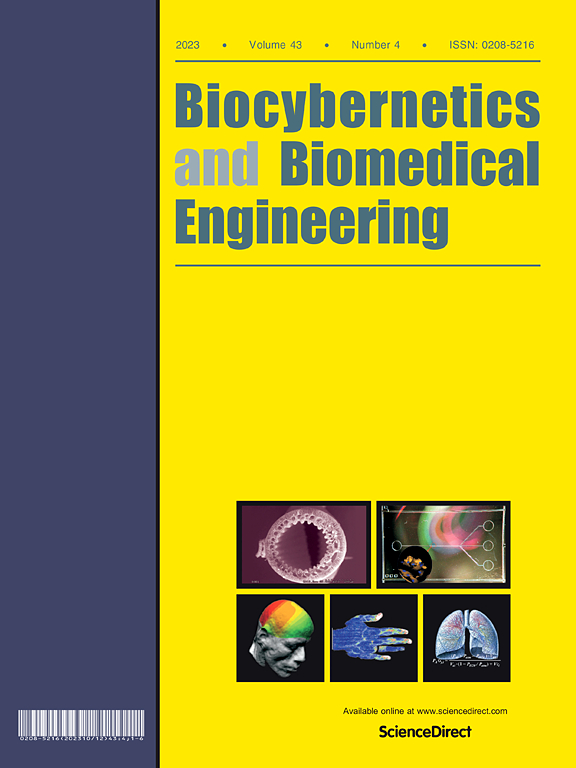A potential approach to detecting of gastrointestinal slow waves based on optically pumped magnetometers array
IF 6.6
2区 医学
Q1 ENGINEERING, BIOMEDICAL
引用次数: 0
Abstract
Gastrointestinal slow wave (SW) can be used to evaluate human gastrointestinal function. Compared with electrogastrogram and electroenterogram, SW magnetic signals measurement can obtain higher-quality results. Optically pumped magnetometers (OPMs) based on the spin exchange relaxation-free method have comparable weak magnetic detection capabilities to superconducting quantum interference devices, and does not require liquid helium. Therefore, this study developed a gastrointestinal SW signals measurement system using OPM sensors. Our system measured rat intestinal SW signals with a frequency of approximately 34.24 cpm, and simultaneously extracted human gastric SW signals of approximately 3 cpm and intestinal SW signals of 8–12 cpm for the first time. It was also observed that the postprandial gastrointestinal SW signals were significantly enhanced compared with the fasting state. The results exhibited consistent power and time–frequency characteristics with previous reports. In summary, the gastrointestinal SW signals measurement system based on OPM provides a new technical approach for detecting gastrointestinal SWs and diagnosing related diseases.
一种基于光泵磁强计阵列的胃肠道慢波检测方法
胃肠慢波(SW)可用于评价人体胃肠功能。与胃电和肠电相比,SW磁信号测量可以获得更高质量的结果。基于自旋交换无弛豫方法的光泵磁强计(OPMs)具有与超导量子干涉装置相当的弱磁探测能力,并且不需要液氦。因此,本研究开发了一种利用OPM传感器的胃肠道SW信号测量系统。我们的系统测量了大鼠肠道SW信号,频率约为34.24 cpm,并首次同时提取了人类胃SW信号,频率约为3 cpm,肠道SW信号为8-12 cpm。与禁食状态相比,餐后胃肠道SW信号明显增强。结果显示出与先前报道一致的功率和时频特性。综上所述,基于OPM的胃肠道SW信号测量系统为检测胃肠道SW和诊断相关疾病提供了新的技术途径。
本文章由计算机程序翻译,如有差异,请以英文原文为准。
求助全文
约1分钟内获得全文
求助全文
来源期刊

Biocybernetics and Biomedical Engineering
ENGINEERING, BIOMEDICAL-
CiteScore
16.50
自引率
6.20%
发文量
77
审稿时长
38 days
期刊介绍:
Biocybernetics and Biomedical Engineering is a quarterly journal, founded in 1981, devoted to publishing the results of original, innovative and creative research investigations in the field of Biocybernetics and biomedical engineering, which bridges mathematical, physical, chemical and engineering methods and technology to analyse physiological processes in living organisms as well as to develop methods, devices and systems used in biology and medicine, mainly in medical diagnosis, monitoring systems and therapy. The Journal''s mission is to advance scientific discovery into new or improved standards of care, and promotion a wide-ranging exchange between science and its application to humans.
 求助内容:
求助内容: 应助结果提醒方式:
应助结果提醒方式:


